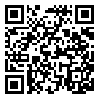Volume 8, Issue 1 (1-2021)
jbrms 2021, 8(1): 10-18 |
Back to browse issues page
Download citation:
BibTeX | RIS | EndNote | Medlars | ProCite | Reference Manager | RefWorks
Send citation to:



BibTeX | RIS | EndNote | Medlars | ProCite | Reference Manager | RefWorks
Send citation to:
Rajaei S, Doudi M, Setorki M, Ahadi A M. Study of the Antibacterial Effects of Kombucha on the Bacterial Isolates from Diabetic Foot Ulcer. jbrms 2021; 8 (1) :10-18
URL: http://jbrms.medilam.ac.ir/article-1-492-en.html
URL: http://jbrms.medilam.ac.ir/article-1-492-en.html
isalamic azad university , monirdoudi@yahoo.com
Abstract: (3395 Views)
Introduction: Diabetes is one of the most important metabolic diseases worldwide. Wound infections due to antibiotic resistant bacteria can cause lower limbs ulceration and amputation in diabetic patients.The present study was performed with the aim of the evaluation of antibacterial effects of cellulose disc from kombucha- on bacteria isolated from diabetic foot ulcers.
Materials and Methods: In this descriptive-analytical study,bacterial were isolated from diabetic wounds and identified based on biochemical and molecular characterization. Then the antibacterial effect of Kombucha cellulose layer wasevaluated on the isolates using disc diffusion (qualitative) and agar dilution (quantitative) methods, and the data was statisticaly analyzed.
Results: The most frequency of pathogenic bacteria that isolated in the present study from diabetic wounds were included 56% Escherichia coli (E.coli), 22% Enterobacter cloacae (E. cloacae), 6% Citrobacter diversus (C. diversus), 4% for each of Enterobacter aerogenes (E. aerogenes), Citrobacter freundii (C. freundii) and Klebsiella pneumonia (K. pneumonia), and 2% for each of methicillin-resistant Staphylococcus aureus (MRSA), and Staphylococcus aureus (S. aureus). TheResults of antimicrobial effect of kombucha cellulose disc showed that the disc weighing 0.5 mg was effective on all bacteria during agar disk diffusion method and the largest diameter of the growth inhibition zone was related to MRSA (27.5 mm).The minimum inhibitory concentrations (MICs) of Kombucha cellulose layer were 12.5 mg/ml on MRSA, 25 mg/ml on S. aureus, 75 mg/ml on E. aerogenes, C. diversus and K. pneumonia, 71.15 mg/ml on E.coli, 85 mg/ml on E.cloacae, and 100 mg/ml on C. freundii.
Conclusion: The findings of this study showed that the cellulose layer of Kombucha has excellent antibacterial effects against infectious bacteria in diabetic wounds and can be used in various medical and therapeutic targets.
Materials and Methods: In this descriptive-analytical study,bacterial were isolated from diabetic wounds and identified based on biochemical and molecular characterization. Then the antibacterial effect of Kombucha cellulose layer wasevaluated on the isolates using disc diffusion (qualitative) and agar dilution (quantitative) methods, and the data was statisticaly analyzed.
Results: The most frequency of pathogenic bacteria that isolated in the present study from diabetic wounds were included 56% Escherichia coli (E.coli), 22% Enterobacter cloacae (E. cloacae), 6% Citrobacter diversus (C. diversus), 4% for each of Enterobacter aerogenes (E. aerogenes), Citrobacter freundii (C. freundii) and Klebsiella pneumonia (K. pneumonia), and 2% for each of methicillin-resistant Staphylococcus aureus (MRSA), and Staphylococcus aureus (S. aureus). TheResults of antimicrobial effect of kombucha cellulose disc showed that the disc weighing 0.5 mg was effective on all bacteria during agar disk diffusion method and the largest diameter of the growth inhibition zone was related to MRSA (27.5 mm).The minimum inhibitory concentrations (MICs) of Kombucha cellulose layer were 12.5 mg/ml on MRSA, 25 mg/ml on S. aureus, 75 mg/ml on E. aerogenes, C. diversus and K. pneumonia, 71.15 mg/ml on E.coli, 85 mg/ml on E.cloacae, and 100 mg/ml on C. freundii.
Conclusion: The findings of this study showed that the cellulose layer of Kombucha has excellent antibacterial effects against infectious bacteria in diabetic wounds and can be used in various medical and therapeutic targets.
Type of Study: Research |
Subject:
Microbiology
Received: 2020/02/19 | Accepted: 2020/05/9 | Published: 2021/01/21
Received: 2020/02/19 | Accepted: 2020/05/9 | Published: 2021/01/21
Send email to the article author
| Rights and permissions | |
 |
This work is licensed under a Creative Commons Attribution-NonCommercial 4.0 International License. |





